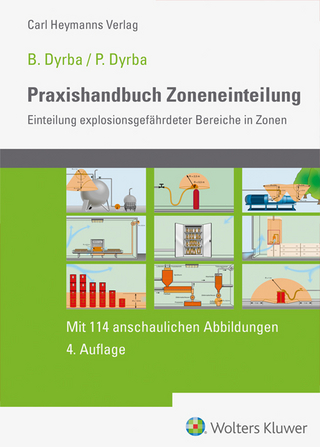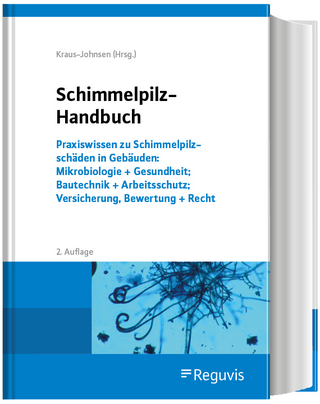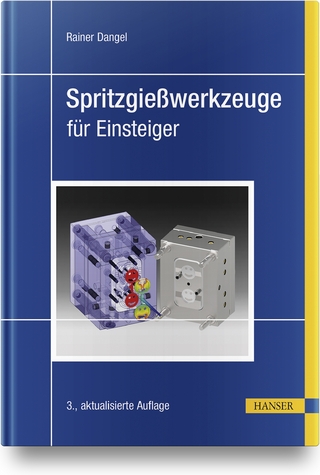
From Additive Manufacturing to 3D/4D Printing 2
ISTE Ltd and John Wiley & Sons Inc (Verlag)
978-1-78630-120-8 (ISBN)
Volume 2 of this series presents the current techniques, improvements and limits of additive manufacturing, providing an up-to-date review of this process.
Jean-Claude André, CNRS, France.
Acknowledgments ix
Foreword xi
Preface xv
Introduction xxix
Part 1 Incremental Innovations and Technologies Pushed to their Limits 1
Chapter 1 Incremental Developments of Processes, Machines and Materials 3
1.1 Introduction 5
1.2 Undertaking non-layered stereolithography 8
1.2.1 Optimizing the light supply within a single-photon process 11
1.2.2 Transparent window 12
1.2.3 Gaseous interface 12
1.2.4 Simultaneous two-photon absorption 16
1.3 Challenging the notion of layers 26
1.3.1 Addition of prefabricated structures 26
1.3.2 Proof of concept 33
1.3.3 Synthesis 34
1.4 Optical-quality surface finish 35
1.4.1 Glasses lenses and contact lenses 36
1.4.2 Microlenses 36
1.4.3 Direct lens manufacture 37
1.4.4 Multi-mode optical fiber 39
1.5 Cold-cast metal 3D printing 40
1.5.1 Electrolytic deposition 40
1.5.2 Metallic ink 43
1.5.3 Laser processes 43
1.5.4 Photochemistry 45
1.5.5 Silver metal 46
1.5.6 Conducting polymers 49
1.6 Colored objects 51
1.7 Conclusion 54
1.8 Bibliography 56
Part 2 Additive Manufacturing Pushed to its Limits 71
Introduction to Part 2 73
Chapter 2 µ-Fluidics (or Microfluidics) 81
2.1 Introduction 81
2.2 Review of microfluidics 82
2.3 Applications 86
2.4 Return to additive manufacturing 89
2.4.1 Comment 1: LIFT process (Laser-Induced Forward Transfer) 91
2.4.2 Comment 2: FEBID process (Focused Electron Beam Induced Deposition) 92
2.4.3 Other methods 93
2.4.4 Hybrid methods 99
2.5 Conclusive outcomes 100
2.6 The converse problem: a potential µ-fluidics application to additive manufacturing 101
2.6.1 3D sintering 101
2.6.2 Deposition of polymerized particles 101
2.7 Provisional concept 110
2.8 Conclusion 111
2.9 Bibliography 112
Chapter 3 3D Nanomanufacturing, 3D µ-Electronics and µ-Robotics 121
3.1 Introduction 122
3.2 3D nano-facturing 125
3.2.1 Smart material: so-called “DNA origami” 125
3.2.2 Return from additive manufacturing to standard methods 131
3.2.3 Comment: nanomaterials and additive manufacturing 136
3.2.4 Conclusion 137
3.3 3D µ-electronics 140
3.3.1 2D or 3D electronic circuits 140
3.3.2 Subtractive/additive coupling 146
3.3.3 µ-Electronics 147
3.3.4 Conclusion and aspirations in the sphere 148
3.4 Actuators and µ-robots 148
3.5 Conclusion 150
3.6 Bibliography 151
Part 3 How Should We Go That One Step Further? 163
Chapter 4 A Short Reflection on Spheres to Explore Their Conditions for Achieving Success 165
4.1 Introduction 167
4.2 Favored spheres of innovation 174
4.2.1 How to know where we must anticipate this technology? 174
4.2.2 Opportunities 179
4.3 Some conditions to ensure additive manufacturing reaches maturity? 183
4.3.1 Moreover where does additive manufacturing sit within this interdisciplinarity framework? 186
4.3.2 Observations 191
4.3.3 Some possible solutions? 198
4.3.4 Proposed solutions? 200
4.4 A positive conclusion 202
4.5 Bibliography 203
Chapter 5 Questions of Hope and “Unhope” 213
5.1 Introduction 214
5.2 The “lab-tribe”(LT) approach 216
5.2.1 Context elements 218
5.2.2 Some results 220
5.2.3 “Scientific excellence” 227
5.2.4 Financing and the orientation of research 229
5.2.5 Prospective opportunities for the research unit 230
5.2.6 Collective projects? Risky projects? 233
5.3 Creativity’s place in research 237
5.3.1 Support to creativity? 238
5.3.2 But all the same, strong brakes on creativity… 240
5.3.3 What to do? 241
5.4 Innovation, a consequence of creativity 243
5.4.1 Academic system 247
5.4.2 Between productions resulting from science and responsible conscience 250
5.4.3 Engagement toward a future focused on innovation? 251
5.4.4 Caught between two chairs? Between more than two chairs? 252
5.4.5 Innovation as scientific production: is it born of freedom? What freedom? 254
5.5 What solutions to evoke for additive manufacturing? 257
5.5.1 General framing 257
5.5.2 And if the history of additive manufacturing in France were examined in light of these comments? 264
5.5.3 A bit of creativity? 275
5.6 In the form of a conclusion: a summary of the author’s point of view 279
5.7 Bibliography 282
Conclusion 297
Index 301
| Erscheinungsdatum | 01.02.2018 |
|---|---|
| Verlagsort | London |
| Sprache | englisch |
| Maße | 164 x 238 mm |
| Gewicht | 680 g |
| Themenwelt | Technik |
| ISBN-10 | 1-78630-120-2 / 1786301202 |
| ISBN-13 | 978-1-78630-120-8 / 9781786301208 |
| Zustand | Neuware |
| Haben Sie eine Frage zum Produkt? |
aus dem Bereich


